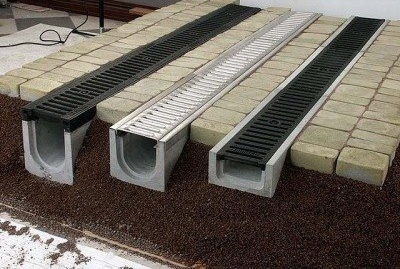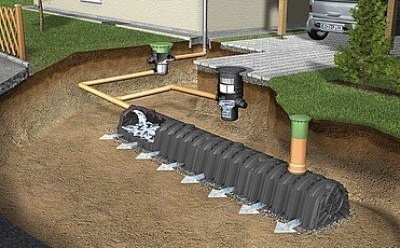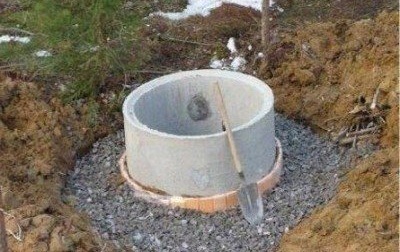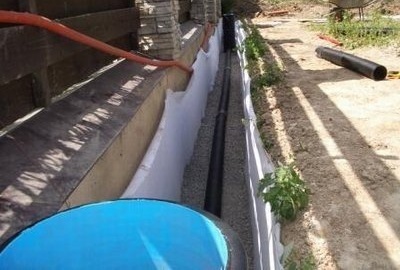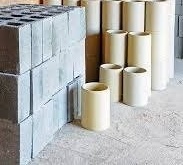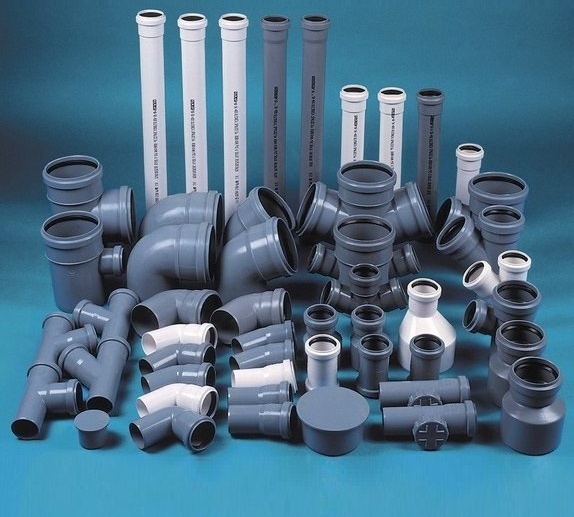Proper drainage around the house: an analysis of the main technical points
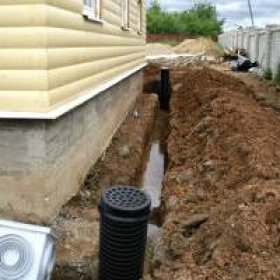
Owners of their own homes are well aware that drainage around the house is on the list of priority activities. Protecting buildings from flooding is very important, otherwise a gradual wetting and destruction of the foundation, distortions of window frames and doorways, cracks on the walls and many other troubles are inevitable. Despite the apparent complexity of the work, it is quite possible to install the drainage system yourself.
Content
What is drainage and why is it needed?
Drainage is a system that removes excess moisture from structures. Most often, it is a construction of pipes through which water leaves the site. Some believe that an effective catchment will provide a solid blind area around the house and drainage is no longer needed. However, experts strongly recommend equipping a drainage system that can protect the building much better from excess moisture.
There are three types of drainage:
- Open. As drains, open ditches are used, about half a meter deep and the same width. The simplest option that is easy to do on your own. However, trenches seriously spoil the appearance of the site, in addition, they quickly crumble and become unusable, so they are strengthened with various trays.
- Backfill. Dug ditches are covered with large rubble, rubble or broken brick. Top covered with turf. The undeniable advantage of the design is its durability, especially if geotextiles are used in the installation of the structure. The main disadvantages can be considered the lack of the possibility of maintenance during operation and the relatively low throughput.
Closed. Drainage is carried out using perforated pipes laid in the ground. The system is very effective, without the drawbacks of the two previous options, but it is quite difficult to arrange.
The main types of drainage facilities
When thinking about how to make drainage around the house, you need to know that there are several types of such systems.
Wall drainage
The construction is mounted around the foundation, it is considered mandatory if there are basements and basements in the building. It is best to start installing the system during the construction of the foundation, at a time when the foundation pit is not yet filled up. Otherwise, it will be necessary to carry out earthwork again, which will lead to additional labor costs and monetary investments. Drainage is laid along the base of the building, pipes from the corners are led out to the inspection wells.At the lowest point of the structure, an output well is arranged, from which water is pumped out or discharged outside the site. For additional protection of the foundation, a clay castle is arranged at a distance of about a meter from the house.
Ring or trench system
This option is laid at a certain distance from the foundation with a deviation from it of the order of 1.5-3 m. It is advisable to use such a structure if there are no technical undergrounds, socles and basements in the building or if it is located on loamy and clay soils. A clay castle is also mounted between the foundation and the system. To effectively protect the building from excess moisture, the drainage is laid 0.5 m deeper than the lowest point of the foundation. It is assumed that the drains will be laid on a layer that easily passes water, for example, on crushed stone.
Preparation for installation
Before you begin to equip drainage, you need to prepare the foundation:
- bitumen-kerosene primer we process the outer part of the base;
- apply bitumen mastic on top;
- in wet bitumen we put a plastering-painting or reinforced mesh with 2x2 mm cells;
- To close the grid after the mastic dries, after about a day, we apply another layer of coating.
Rules for arranging the system
The basis for the construction are special drainage pipes. Most often, these are plastic parts with a diameter of 75 to 100 mm with perforation applied to them. If it is not possible to purchase them, you can take ordinary sewer pipes of the desired diameter and drill holes in them. In this case, it is necessary to take into account the size of the gravel in which the part will be laid, it must be larger than the diameter of the drilled holes.
Practice shows that it is quite possible to equip the drainage at home with your own hands. The following requirements must be met:
- The perforated pipe is covered with gravel for about 0.3 m. To prevent clogging of the system, parts wrapped with filter material are used or geotextiles are laid.
- If the structure passes under the road along which the vehicle is moving, metal pipes are mounted in this section, connecting tightly fitted couplings with the rest of the system.
- For unhindered cleaning and maintenance of the structure at the main nodal points (on bends, at the intersections of parts) and every 10-12 m in straight sections, inspection wells are installed.
Water from the system is discharged into the gutter or sump, the simplest version of which is a conventional welded box with a metal grate.
Drain Installation Instructions
Experts advise starting the arrangement of the system with building a site plan. Even the simplest plan will help determine the optimal pipe layout and calculate the amount of materials needed. Installation of the facility is carried out in stages:
- Mark the plot in accordance with the plan.
- We dig trenches of the necessary depth. Their width should be sufficient to fit inside the pipe and gravel.
- We organize the slope of the drainage system. We measure the height differences and set the points at the right points. Carefully pour sand into the bottom of the trenches until the desired slope of the bottom is formed.
- We cover the bottom of the ditch with geotextiles, on top of which a layer of gravel is laid. Be sure to comply with the selected bias. We are preparing a small depression necessary for laying pipes.
- We place perforated parts on the prepared place and reliably connect them. Be sure to check the slope of the pipeline. This can be done using a cord or rope stretched along the trench.
- We install viewing wells.
- If the filtering material is not fixed on them, we wrap it with geotextile and fix it with a polypropylene tape or twine.
- We fill the system with gravel washed with a layer about 20 cm wide.
- A geotextile, previously laid in a ditch, wrap the filter layer, making a large overlap.
Finally we fill the system with coarse river sand.
Viewing and prefab wells
As experience shows, the “correct” manhole guarantees effective drainage around the house. The device is intended for maintenance and periodic cleaning of the system, without which it quickly becomes clogged and becomes completely unusable. You can buy a finished item in a store or make it yourself from a piece of plastic pipe of a suitable diameter. The well should be large enough so that a person can lower his hand into it to clean the structure.
At the lowest point in the system, a well is installed to collect water. It can also be purchased at the store or performed independently. Welded and reinforced concrete structures are very common. The second can be made of rings or cast by hand. In any case, the depth of the well should be sufficient so that the sand and earth settling to the bottom do not interfere with the free flow of water. The precipitate is periodically cleaned.
A well-executed drainage system around the building will protect it from excessive moisture, which threatens many problems. Professionals can easily cope with this work, however, if desired, it can be done independently. A pleasant result of the efforts spent will be a cozy house, reliably protected from the harmful effects of groundwater.
